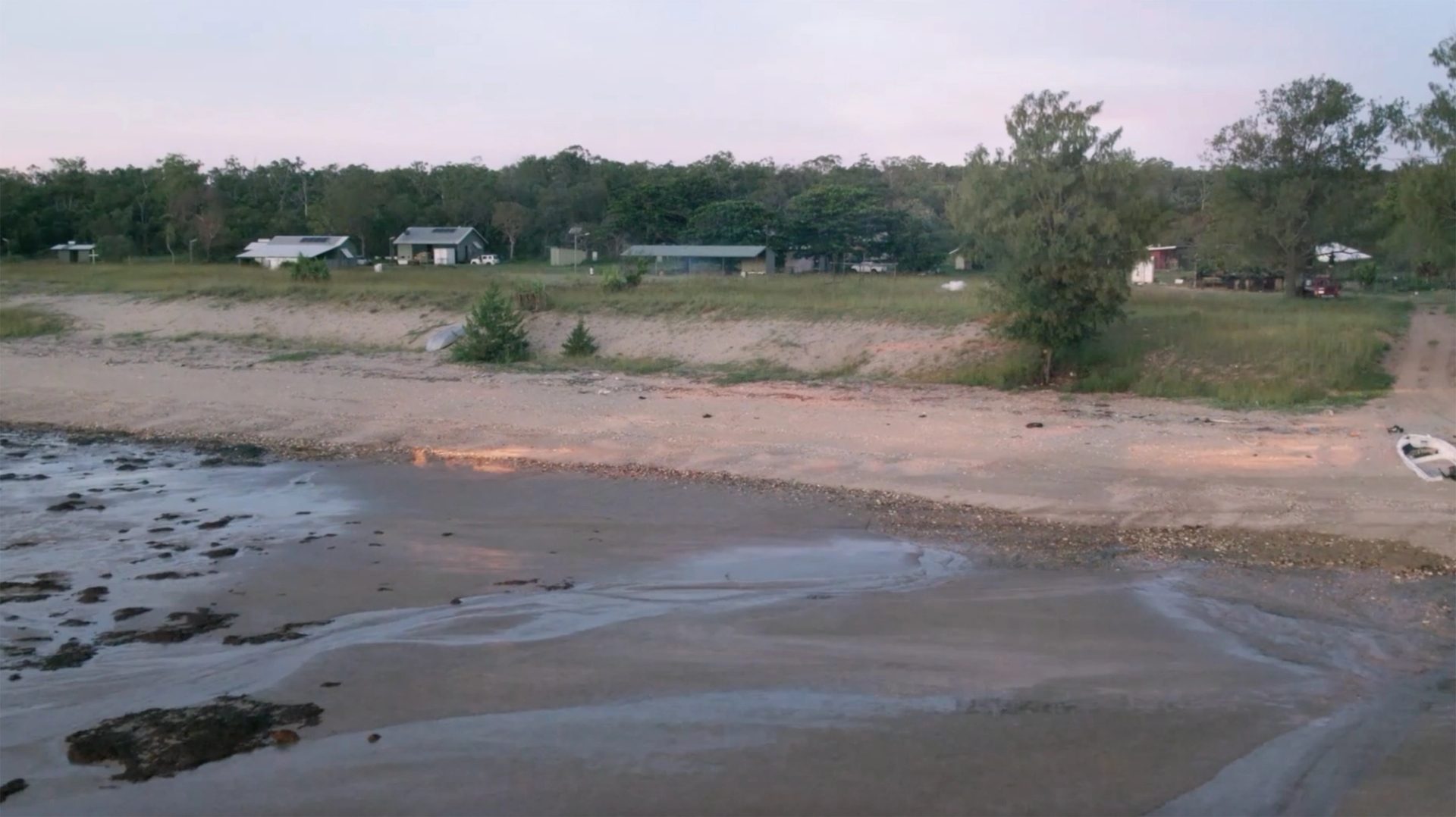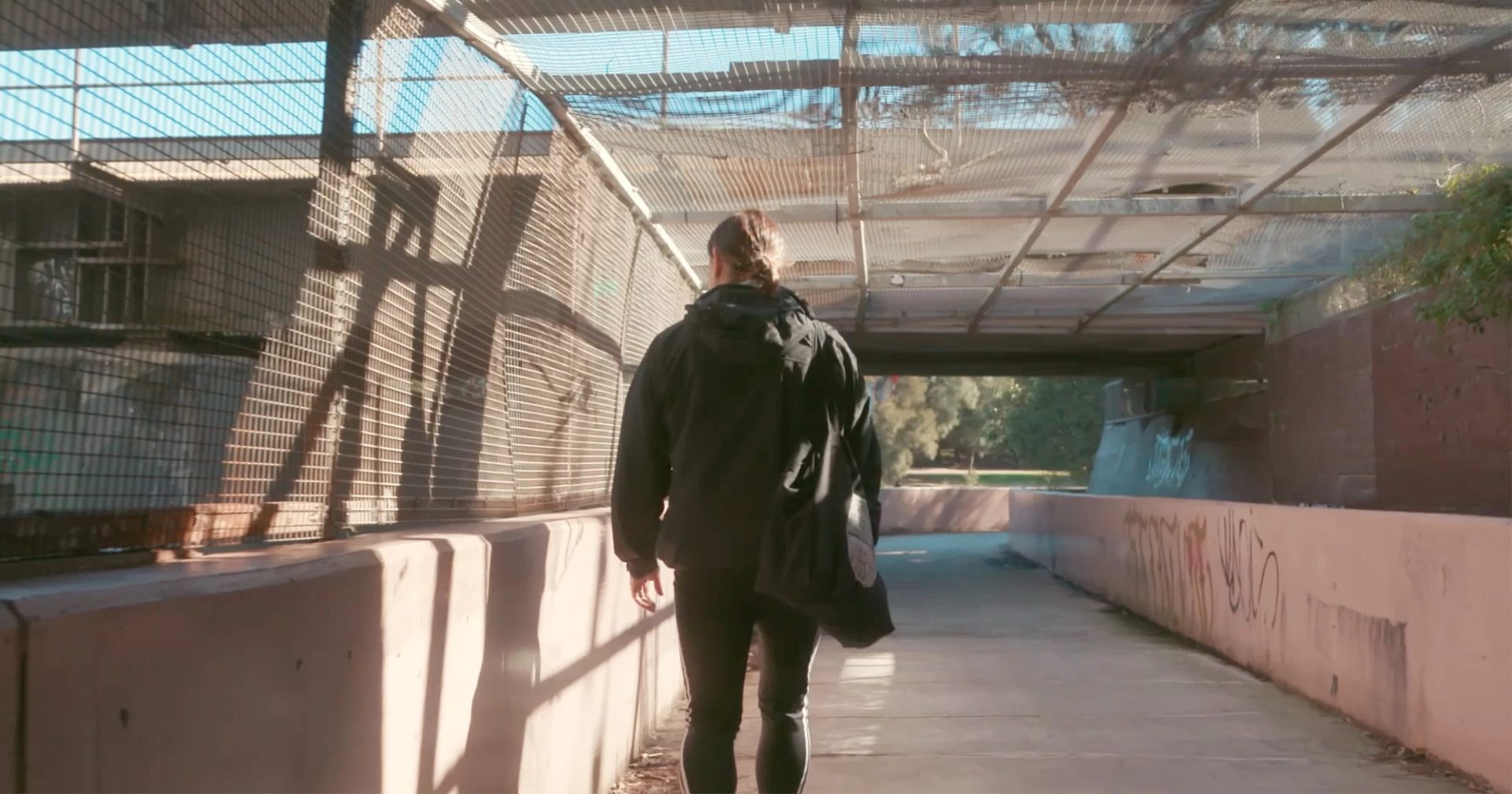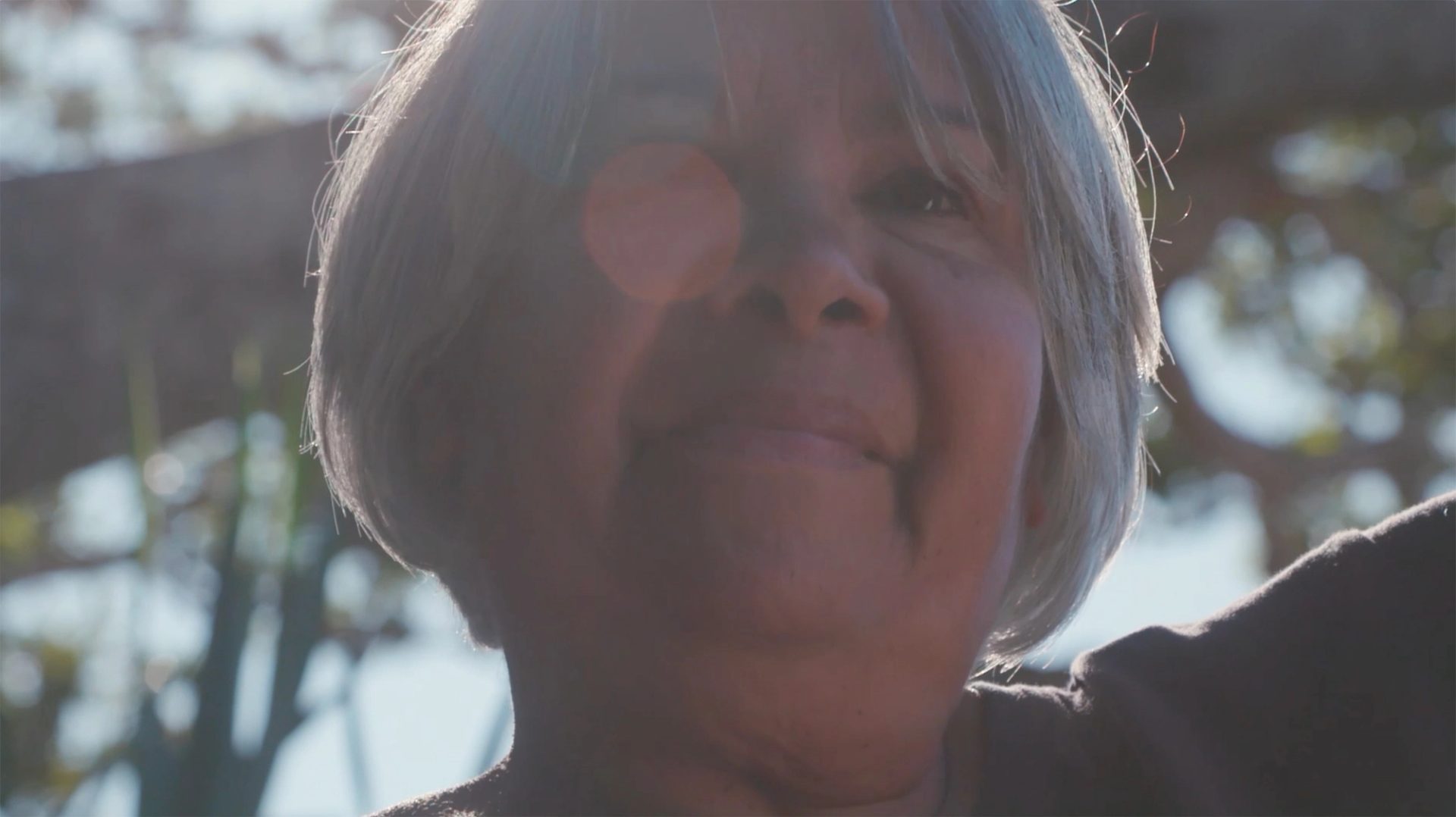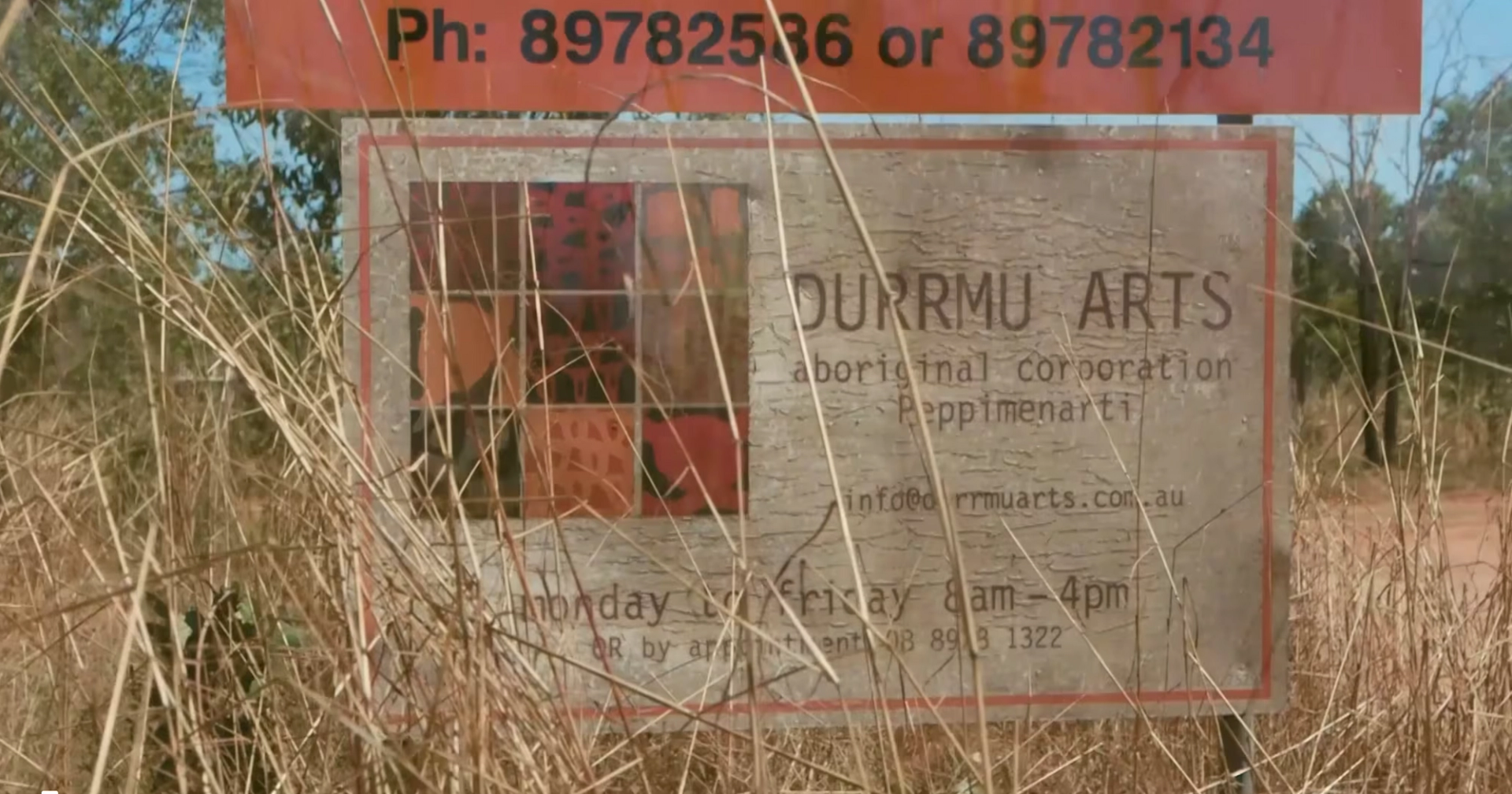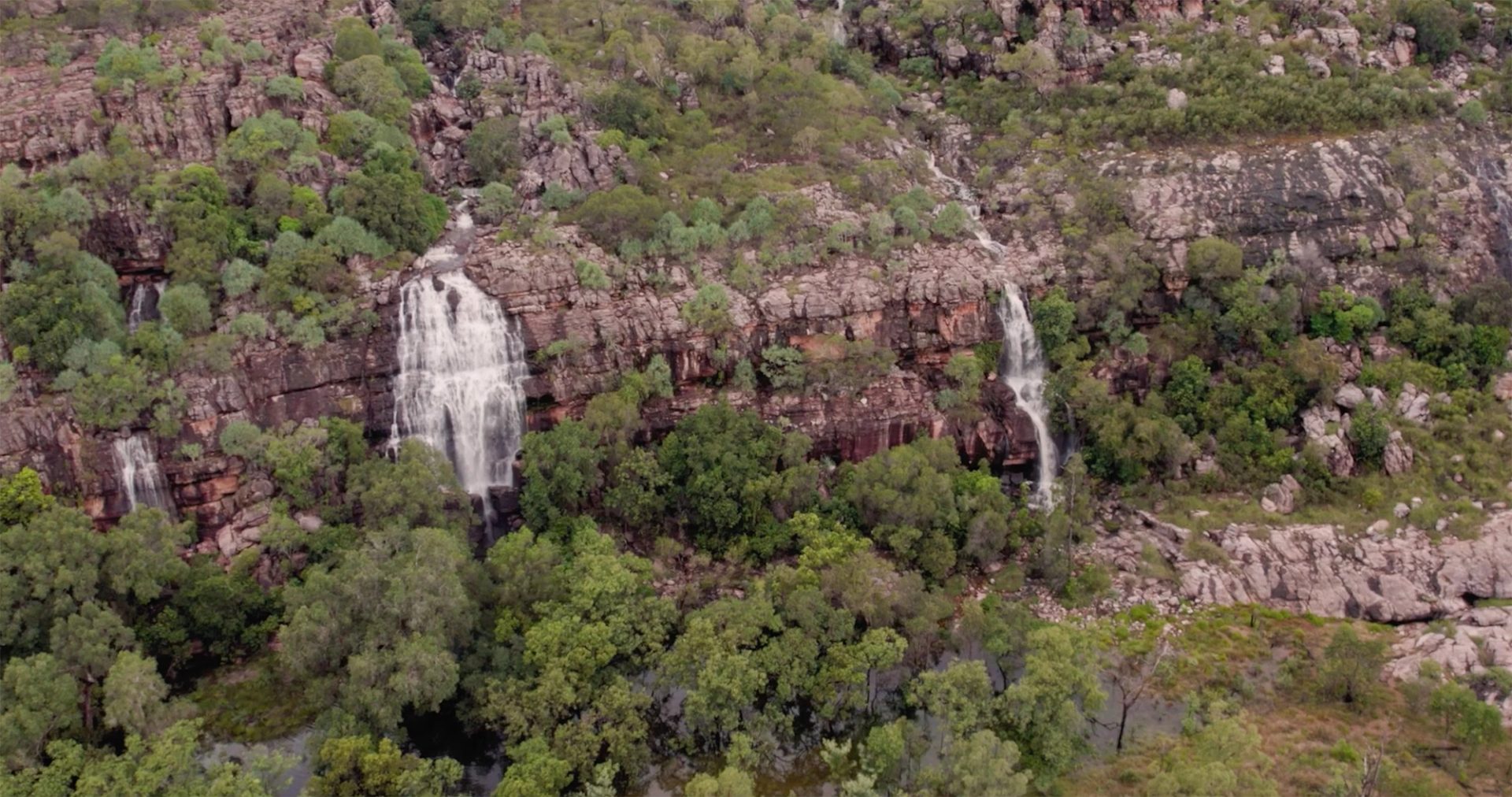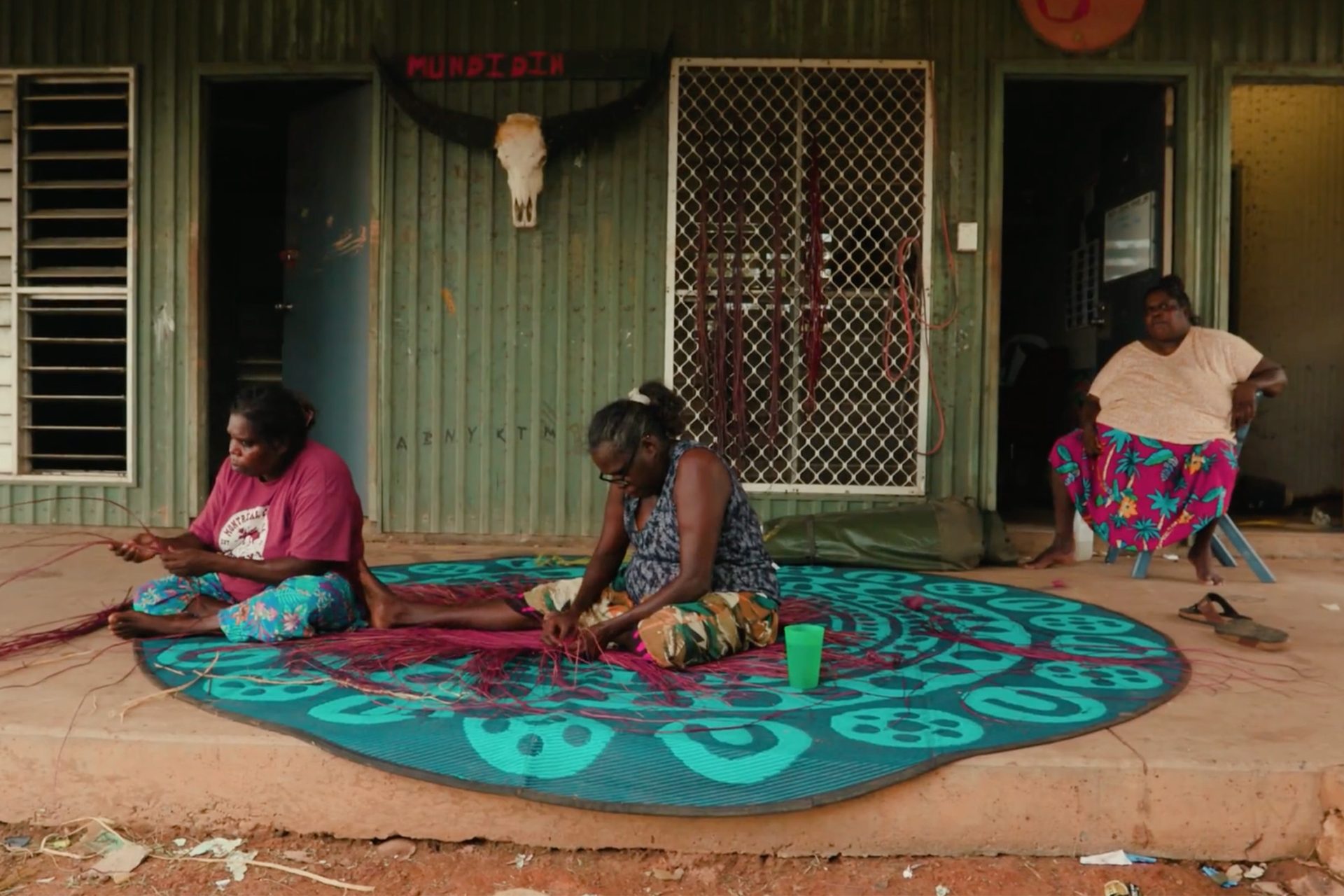A Magical Process

Light, layers and tactility – Alchemy is an exhibition that displays new commissions by First Nations creative practitioners from across Australia, particularly the Northern Territory, who specialise in natural dyeing techniques. Taking its title from the protoscientific tradition of transforming one kind of material into another, Alchemy uncovers the mysterious processes involved in producing pigments and dyes.
Extending beyond process, this exhibition also shares the wider social and cultural narratives that surround each of the commissions, such as the matrilineal relationships embedded within industry practice.
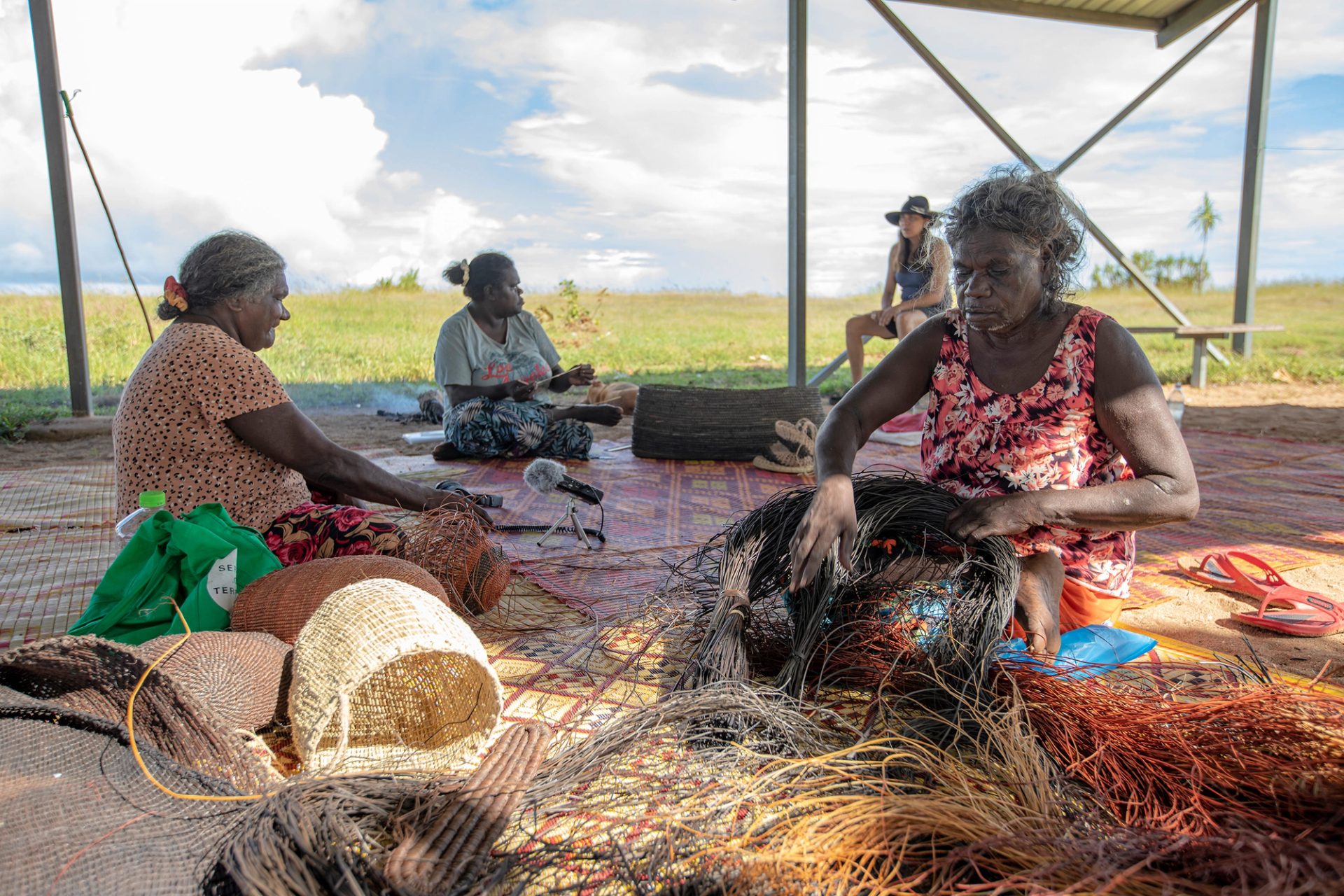
Inspiration
The concept for Alchemy is not mine. It is an extension of the Powerhouse Museum story loosely mapped out by the inaugural First Nations Director, Emily McDaniel, who was also on the curatorium for the museum’s 2022 exhibition and publication Eucalyptusdom. This is the story of institutions, a rolling continuum of bodies and minds that come through the doors over the years. We add sentences to the narrative. I picked up this half-sentence with the task to complete it. The next cultural custodian will do the same. Find the sentences I didn’t finish and complete them. So it goes.
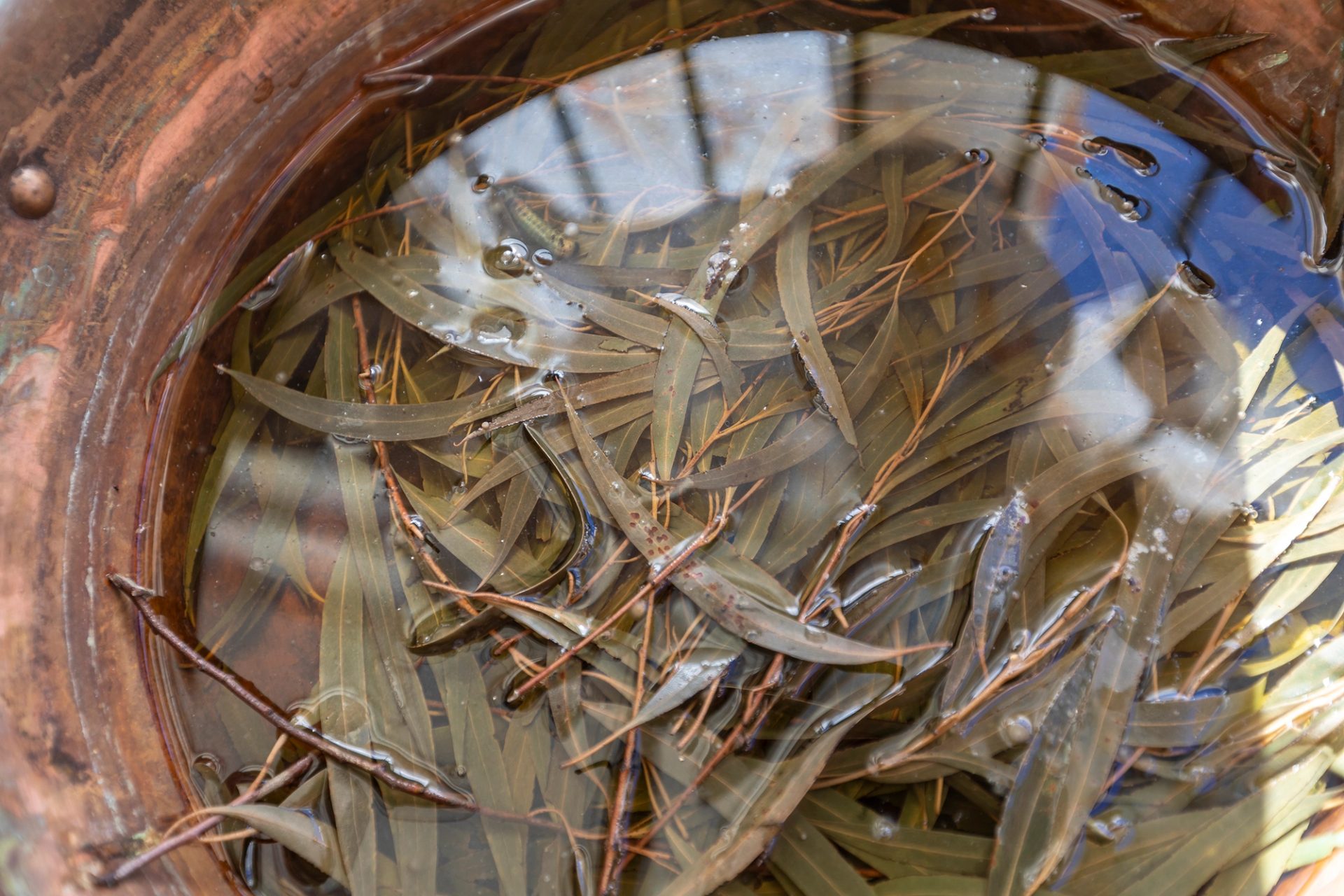
‘Eucalyptusdom evidences the past practices of the museum, while concurrently inviting the refraction and disruption of a singular colonial story.’
I look back on Eucalyptusdom as the beginning of deep self-reflection and understanding of what the body of Powerhouse holds. A first appointment with a therapist. A look at its collection, its people and its past that manifested in an award- winning exhibition. It was a beautiful, honest offering built by a curatorium of minds and a big team of experts from a variety of cultural backgrounds. Castle Hill’s experimental eucalyptus plantation site featured as a key component of the historical identity of Powerhouse and the next chapter will be written on that Country at the Castle Hill site. The first sentence will read Alchemy, a seemingly magical process of transformation, creation or combination.
Influences
The immersion dyeing techniques featured in Alchemy were first introduced by Christian missionaries. This is not a ‘traditional’ practice. It was common to paint onto the surface of woven objects for ceremonial purposes but among the array of colours that you see walking through an art fair, art centre or gallery today, some are achieved with new techniques using new types of botanicals. These techniques were popularised in the 1940s because of European demand. Mission nuns encouraged First Nations women to weave for the mission shops as a supplementary income stream. Rations were given as ‘pay’. Tea, flour, sugar, tobacco.
The mission shop and the tourist item became a core source of income. The only ‘normal’ jobs First Nations people were allowed to have were as domestic servants, stockmen, labourers or athletes – tent boxers in travelling shows. Art practice was the only commodified, socially acceptable avenue to make money and maintain cultural practice. This is why Albert Namatjira painted landscapes in watercolours. This is why La Perouse men made boomerangs and the women, shell works. For Northern Territory (NT) women who lived on missions it was weavings in natural fibres, for the men, bark paintings and weapons too.
Memories
Life on the missions was very different depending on who you ask, when they were there and what mission they were at. My great-great grandmother, Kathleen (Kitty) Cubillo Nungala was one of them. She was taken from Newcastle Waters in the Barkly region (NT) to Croker Island mission and had very fond memories of fishing off the beach after she had completed her duties for the day. You can read about the tragic stories that caused huge fractures in the foundations of First Nations people’s lives in countless Royal Commission papers. We still feel it, live it and breathe it throughout the colonial calendar of mourning.
The positive stories of cross-cultural influences are sometimes brushed over, not given airtime amongst the trauma content. The use of immersion dyeing practices in First Nations communities is a story of colonisation. It’s a story of European influence that opened up a market for consumers. It’s common to see a fibre work or naturally dyed fabrics in the average Australian home. They became art objects when they were put on the walls of homes and not on the bodies of people. First Nations people didn’t encourage that. It was museums, collectors, the general public. They were considered too beautiful to be used for the function they were created for, and subsequently were put on a wall for display. To look at – in my opinion rendering them useless for any other purposes but research into a time that was.

Knowledge
For this dyeing practice to become so widespread, the dyed objects so adored, First Nations cultural custodians used their existing botanical knowledge to be able to achieve such a wealth of colours in a short period of time. Pinks, purples, yellows, reds, blacks, greens, browns and oranges can be mixed up by masters of the practice in a day. Maicie Lalara from Anindilyakwa uses a mushroom found in the sand dunes to create a golden yellow. She only started dyeing with it in the past couple of years. Sourcing, harvesting, processing the botanic materials is laborious work. It is tough on the body even when you are with a local who can go to a direct source. You still got to dig, scrape, cut and clean up the mess you made before you even get close to a pot of colour. Then there are the materials they are dyeing. If it’s not a pre-made fabric, then there are another few days of sourcing, harvesting and processing. The colours depend on the seasons. The amount of rain, sun and wind all play a part in what is available. People trade across Country to other mob, so a green might appear in one work that came from hundreds of kilometres away, usually a gift or trade from a relative local to that area.
The same plant will have a different name in a different community. There are the European names and the common names to consider on top of the rich array of First Nations languages. So instead of trying to make sense of the same plant with several different names, it is more about getting to know the plant. What colour is the root? What shape are the leaves? When does it bloom? When is it hard to find? This knowledge lives in the artists, the women’s bodies, not on a wall label.
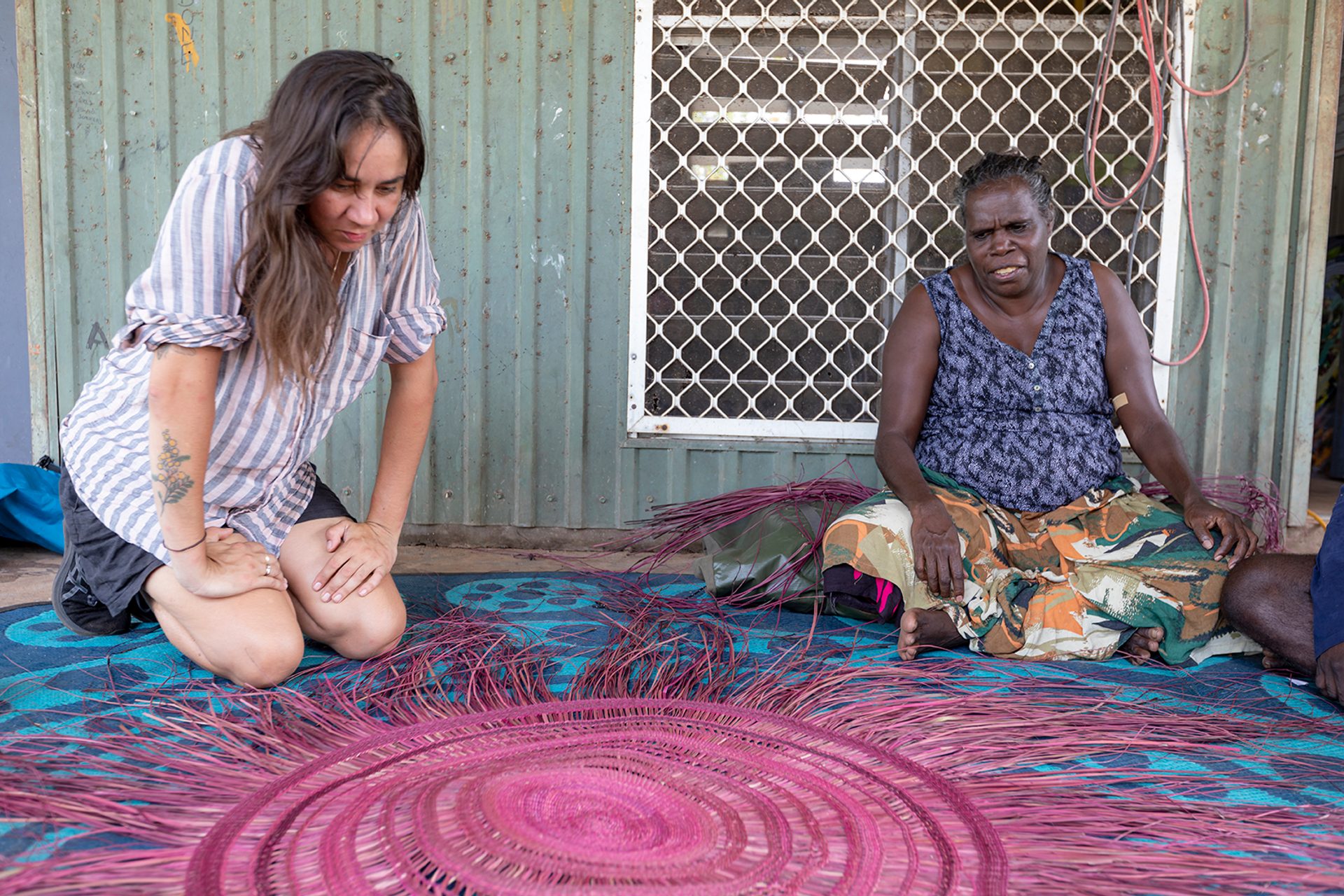
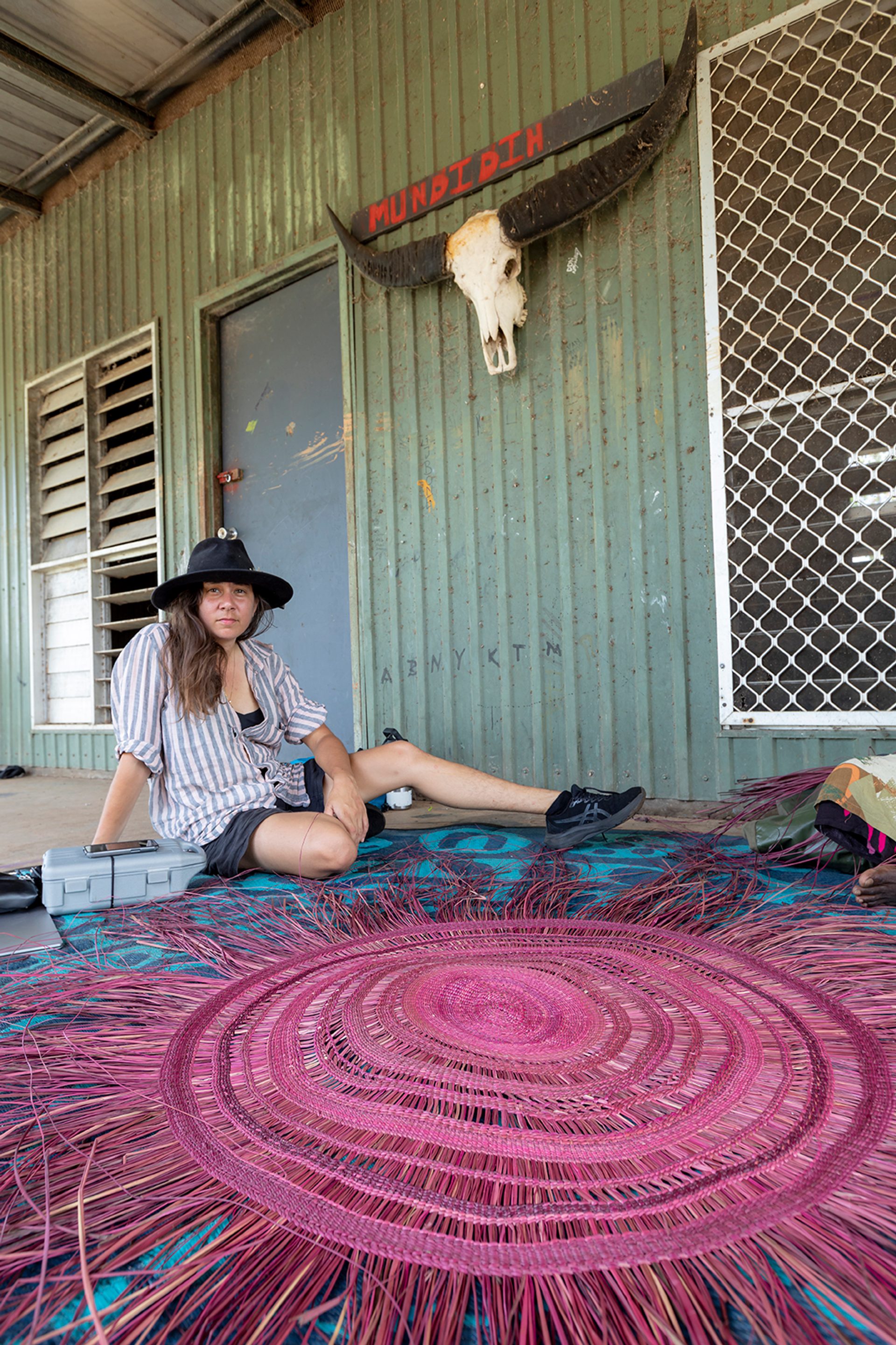
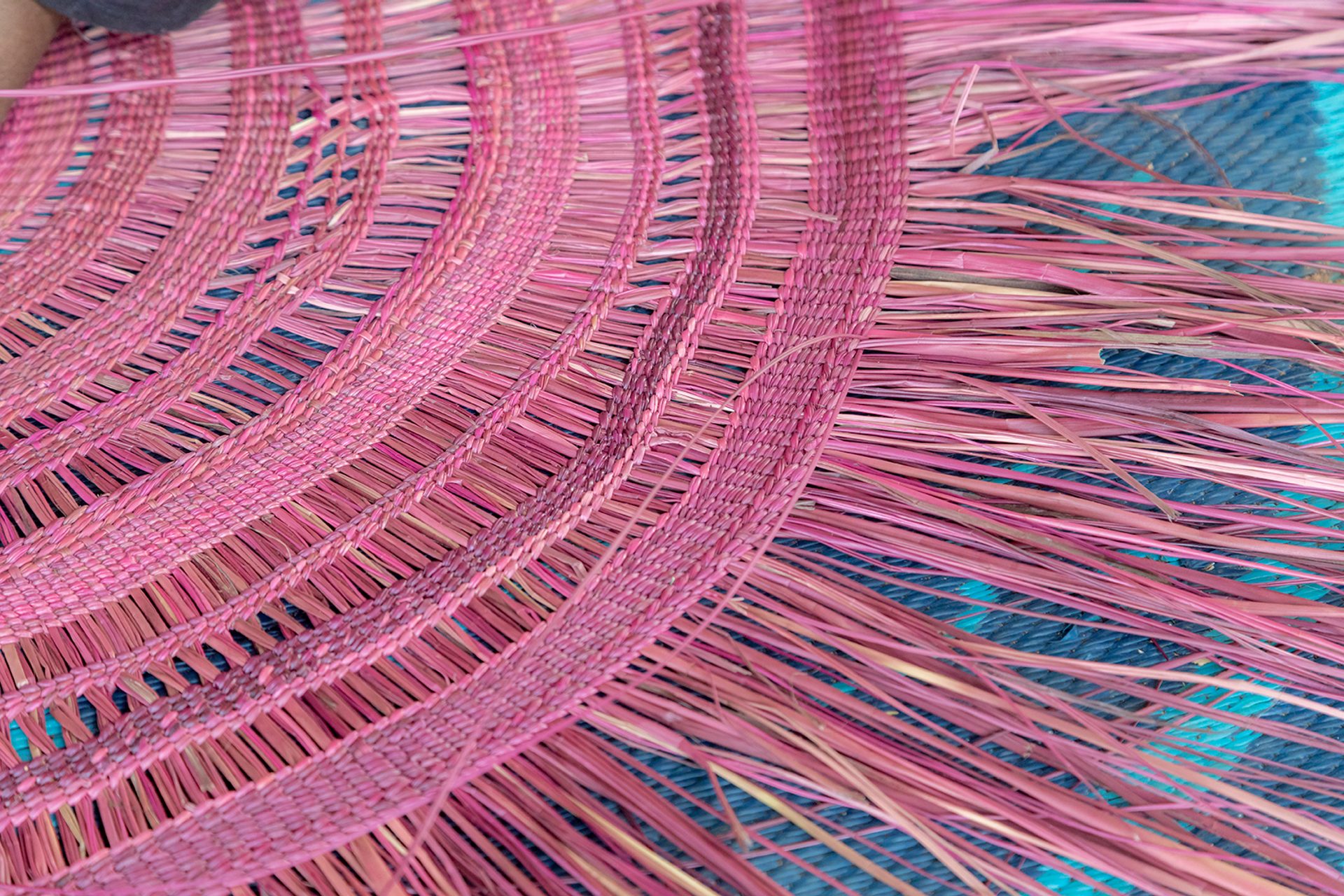
Those who use fabrics – wool, cotton or silk – to me are painting with Country onto the fabric objects.
In the same way our old people would apply pigment to a surface, they soak, paint, pin and let the plant material bleed into the fabrics. The way the plant material is treated is different for each participating cultural custodian. Fibre artists use the forms they have been taught by their old people. Forms that are used for survival and everyday life.
Bags, fishing nets, adornment, mats that have several design variations that are specific to that area, peoples, family, Country. The number of ingenious designs in woven form is mind blowing and master weavers like Regina Pilawuk Wilson from Durrmu or Margaret Rarru Garrawurra from Laarra know how to make all of the forms local to their area. The complexity of the knowledge needed for this practice is not honoured in the price tags you find attached to the works. Yet the resonance of Country it is born from will never fade like the money in our accounts will.
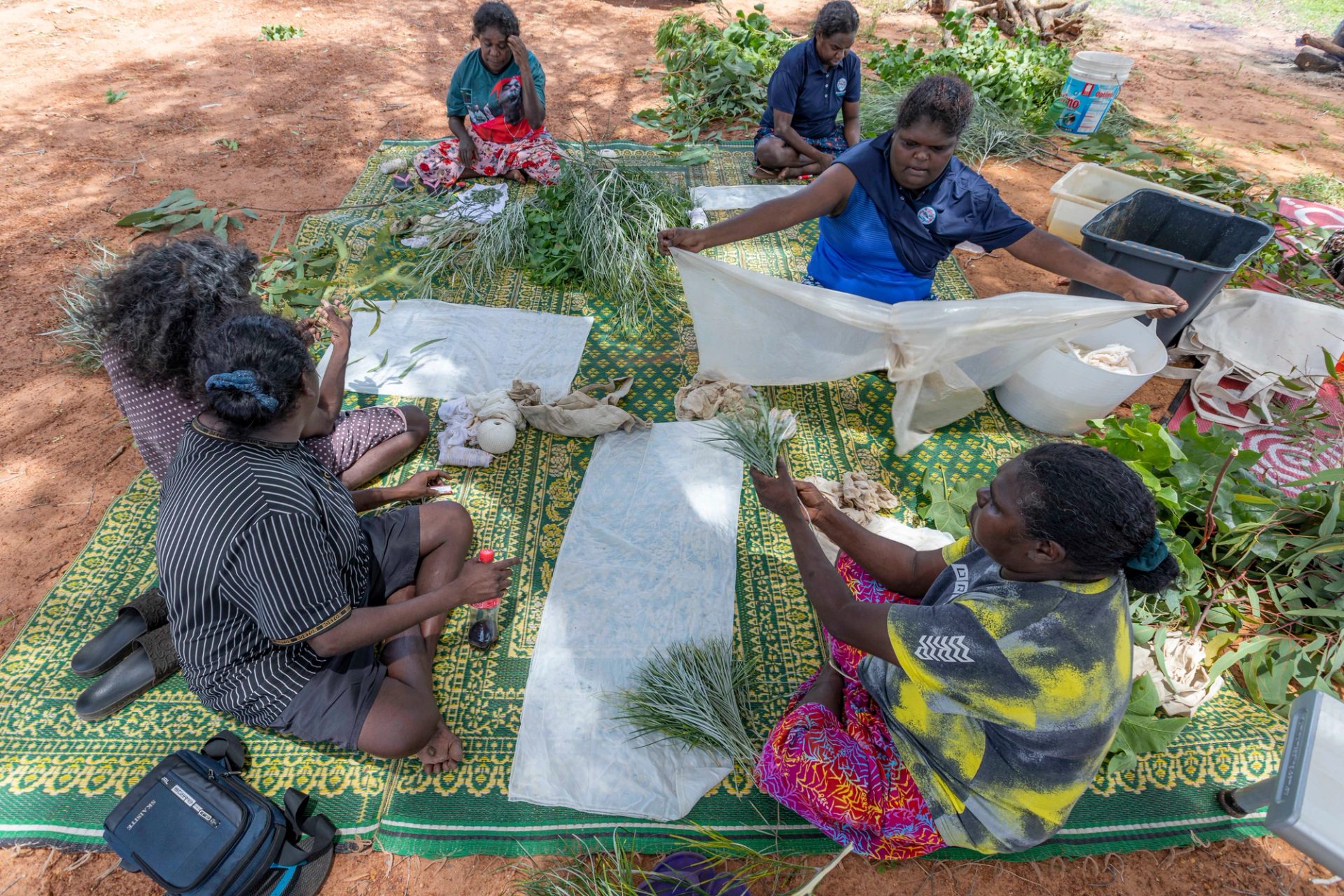
Identity
Eucalyptusdom was a strike at the foundations of this institution. The curatorial team tested how far they could push, pull and un-tether the narrative of the institution. They had a self-reflective and curious disposition with the aim of finding a way forward through an understanding of this institution’s identity. They asked about the people who have been left out and those who have been kept in this porous place and there was an obvious and yet common gap found in colonial institutions Australia-wide.
First Nations peoples, stories and objects were never part of the founding conversations. We were meant to die. So, my team went to Country, to the museum's botanical collection. Back to the eucalypt, the local endemic, to the people of place in an attempt to teach what it is to understand place, to understand Country and be of Country. It’s also a story of cross-cultural influences, of colonisation and reclamation. This is not an exclusively First Nations story.
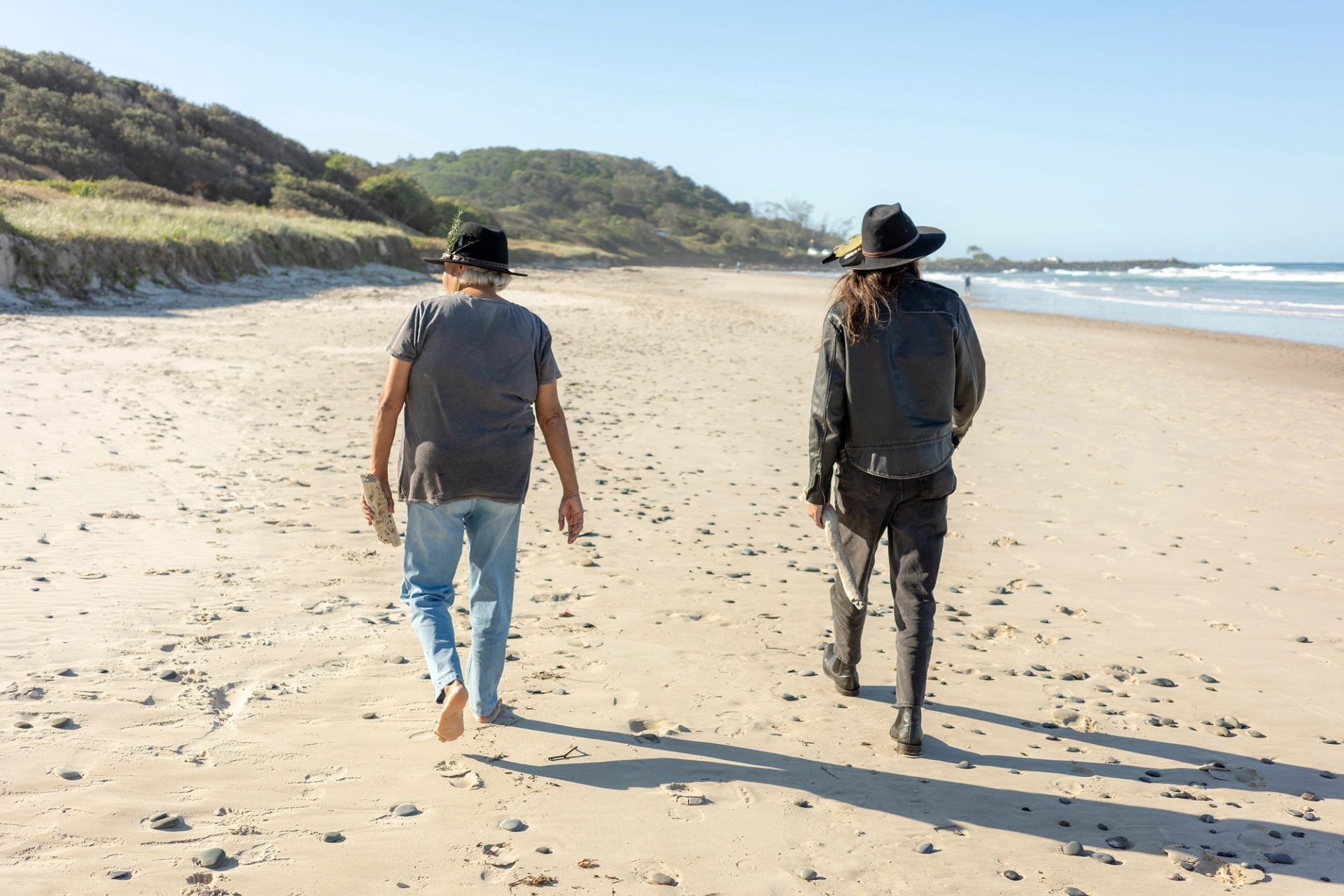
Experimentation
The development of Alchemy took on an alternative methodology, it didn’t follow the typical institutional ways of working. A follow up appointment to Eucalyptusdom with a methodology foreign to the people outside of the First Nations Directorate. I did the opposite of what I have been trained to do for thirteen years as an institutional curator. I also did it alone. There was no curatorium. I took away the usual parameters.
Alchemy is an experiment in every sense because of this. There are no wall labels, there are descriptive biographical essays detailing the relationship between makers, contributors and the museum, represented by me in this case. I write in the first person; I am including myself and the people around the artists in the narrative. You won’t find the recipes for colours, botanical names, or translations into English if the women chose not to speak English. I travelled to every community and walked Country with them.
What I saw. What I heard. What I was shown, is exactly what I brought back.
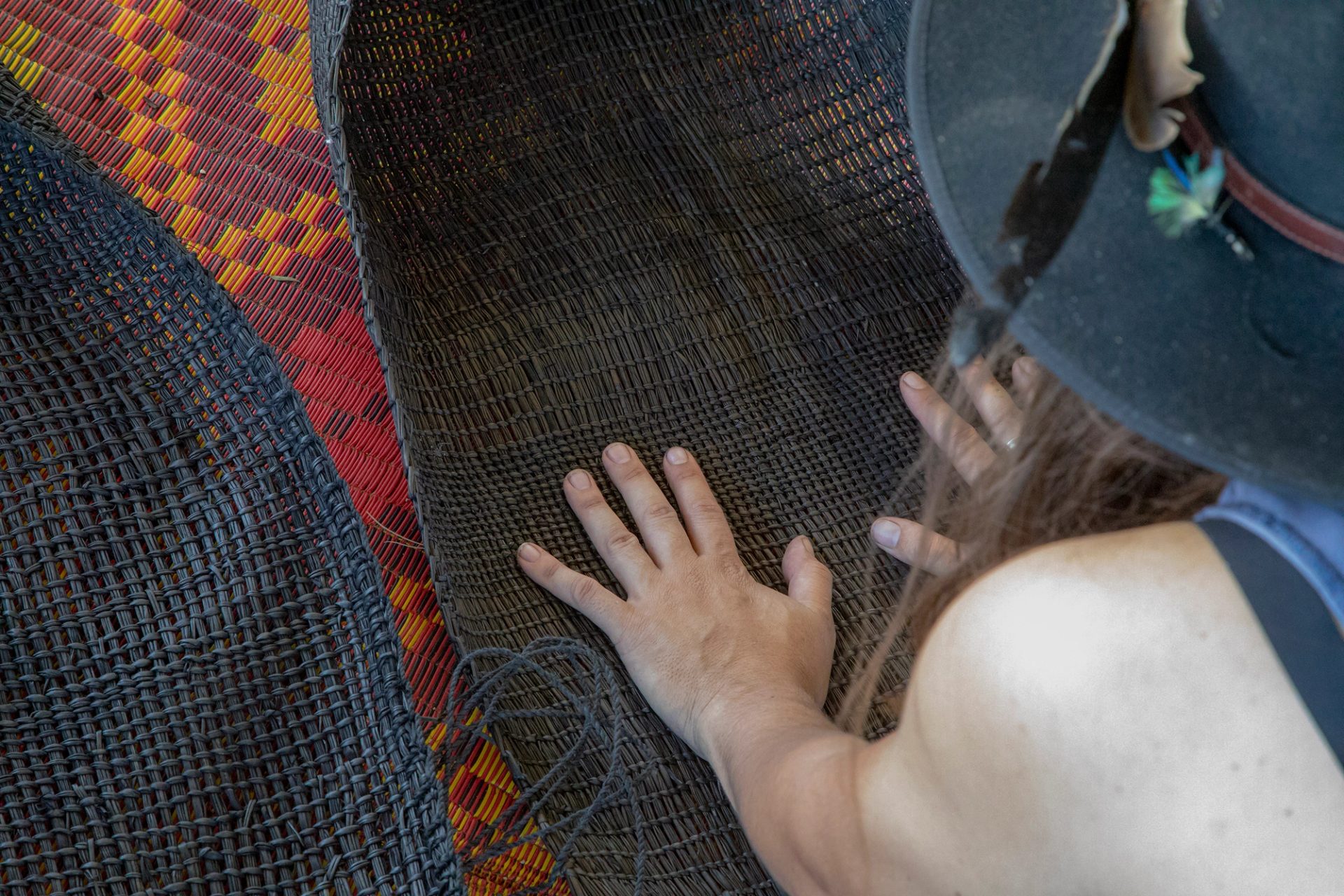
This project was pitched to the communities in the dry season, the wrong season for weaving. Thanks to climate change extending the seasons and the tact of artists, there were enough materials available. It was pitched for exhibition in a newly constructed building at Powerhouse Castle Hill. Always difficult to plan around a space you have never entered, even harder in one that hasn’t been built. I hadn’t worked with any of the artists in this show. Risky move as a curator with new commissions as it requires a massive amount of trust and communication. Commissions can go wrong quickly; it pays to have at least one or two sure bets. Given the Powerhouse remit for this show is just as much about the process as the product, the videos do just that; show the process.
Creation
Each art centre and artist suggested their own project based on how they wanted to show off their use of endemic botanic dyes. The brief from me was simply excellence, not volume. Experiments, not sure bets. I wasn’t after a certain number of ‘objects’ that would be sure to impress.
I leant in, surrendered to the fabricated power given to me because of a job title and in turn allowed the experts to be trusted as experts. Again, ‘risky’.
Peppimenarti and Laara artists chose to awaken several old forms, not made in their lifetime, or only in the lifetime of their resident master weaver. Lucy Simpson’s offering was one of deep personal significance, I could never have dreamed that she would offer such a story to us.
Anindilyakwa artists went big. Their first ever conceptually-derived work, major in scale with 22 women working on the piece, it is their story of Country in a quarter kilometre of silks. Kay Lee Williams stepped outside of her comfort zone and into a gallery space for the first time, and blossomed throughout the process.
Mamadawerre artists lent into working directly with me and created a work of masterful excellence. A show-off piece, a marebu (woven mat) in pink, bigger than any I or they have seen. Allowing them to dictate their own offering or invite curatorial input meant what was offered was a suite of works that speak to community building, not just content. The risk is worth it.
Agency came on as delivery partners, the only national not-for-profit organisation I knew could support a project like this. Not many executive assistants in institutions are trained in how to get a curator to Aboriginal owned and operated lands, apply for permits and figure out transport options when Jetstar doesn’t fly direct. I needed a support team who could speak both my language and institutional language. Agency can speak several languages, fluently. To have the consistency and stability of their team made all the difference. We got stranded on an island and I didn’t even worry about it. Agency are well aware of the travel conditions for a project like this. They weren’t going to send a search party if I flicked them a few images of croc-infested rivers and charging buffalos while on the road. I would get, ‘Oh cool, is that Alligator River? Big rains out there recently? Looks flooded with crocs. Hope you’re having fun! Give us a bell if you need anything.’
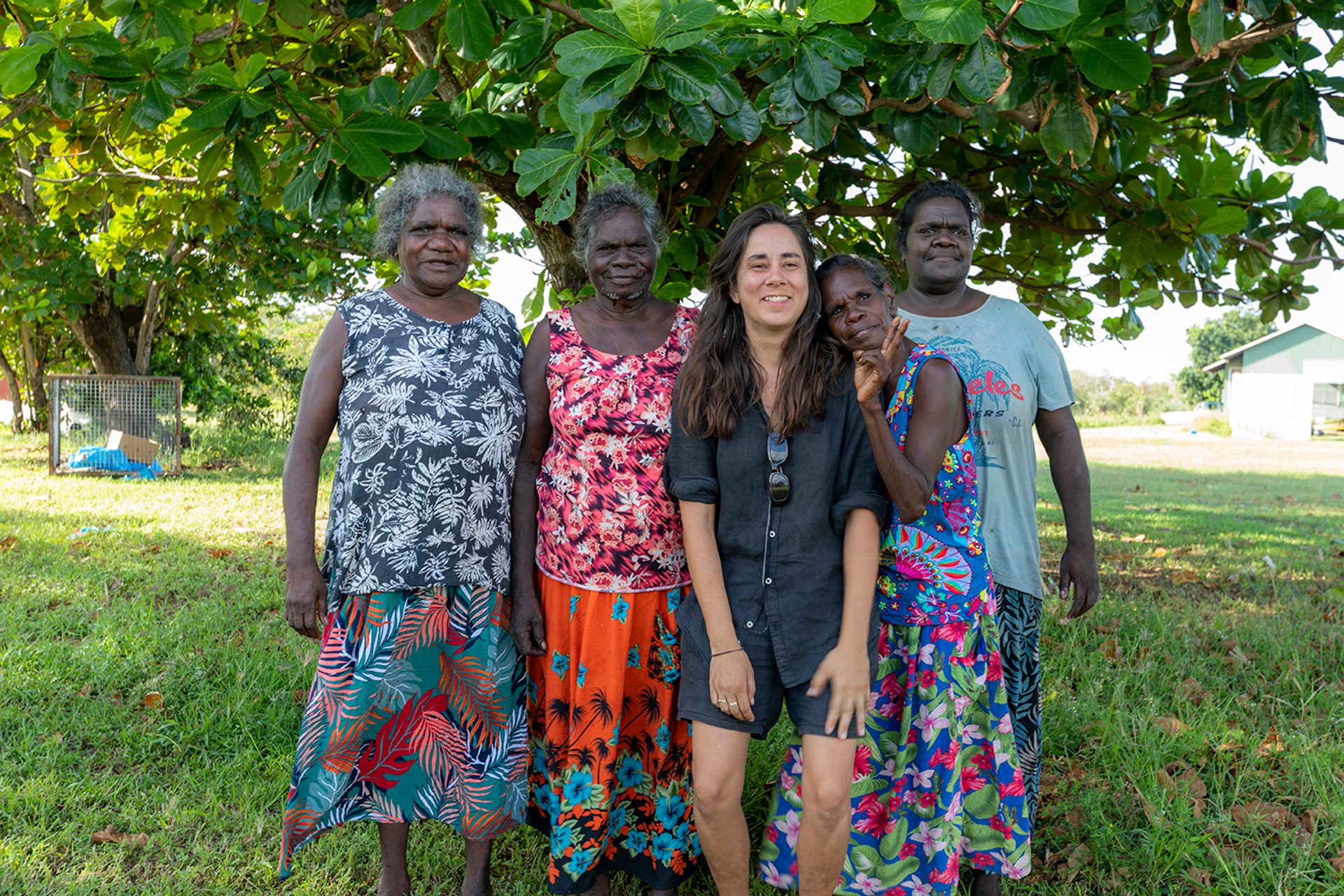
Art centre managers have a complex and integral role in this world. They are the key contact between an institution and the artists they represent, and are usually not First Nations peoples. With a great manager, you can see an art centre change in a matter of months. Communication is key in these projects, and some do it better than others.
It can be a steep learning curve for all. We are all human at the end of the day. I must give special thanks to Katie Hagebols for feeding the whole team home-cooked meals. She could communicate fluently with my belly, and this is not in the job description I can assure you. I did not request handline-caught barra on arrival, but it was delivered! There are some amazing art centre managers out there and the best ones usually make themselves invisible in this process and aren’t mentioned in the texts. They are usually pushing the artists and their work into the light while they support from the sidelines, as they should.
I think it’s appropriate in this context, however, to give special thanks to the managers and staff. Mandi King (Milingimbi), Sam Moody, Sam Corbett, Georgie Kamvissis (Anindilyakwa), Britt Pfeiffer and Katie Hagebols (Marrawuddi) and Kara Rodski (Durrmu), thank you for being the bridge between the emails, phone calls, texts and what happens on the ground with the artists. It can be hard to see what’s happening from the big smoke without a balanda bunji (European friend) on the ground chasing artists around.
By chance, the only man on the core project team was Tim Hillier, a non-Indigenous videographer who works closely with Agency. Tim travelled with me to each community with either Miriam La Rosa or Bronwyn Lobb from Agency. Tim has previously travelled and worked with most of the communities we went to in his line of work, so he was a familiar face to many. He is the definition of a ‘bloody good bloke’. This, again, was a deliberate choice. With me being a new face to many of the artists (even though I had relations in most communities), a familiar face with a camera in hand helps. It is also honestly a good idea to travel with a man in the party. Unfortunately the truth is that some rural towns have some interesting characters and a young good looking (if I don’t say so myself) mixed race woman can become a target quick smart. There were several times when I watched Tim protect me. Coming up to stand with me while I was being served, while men watched my every move from behind like a croc stalking prey. Ignorant me didn’t notice half the time, not until I turned around and faced the croc. Tim was always watching my back. Tim was watching everything with a camera in hand. He worked hard and I am not sure there are many videographers and photographers who could shoot what he did in those conditions. Just the heat is enough to scare a good percentage of great photographers away. I gained a big brother in Tim and someone who understood the assignment from the word go.
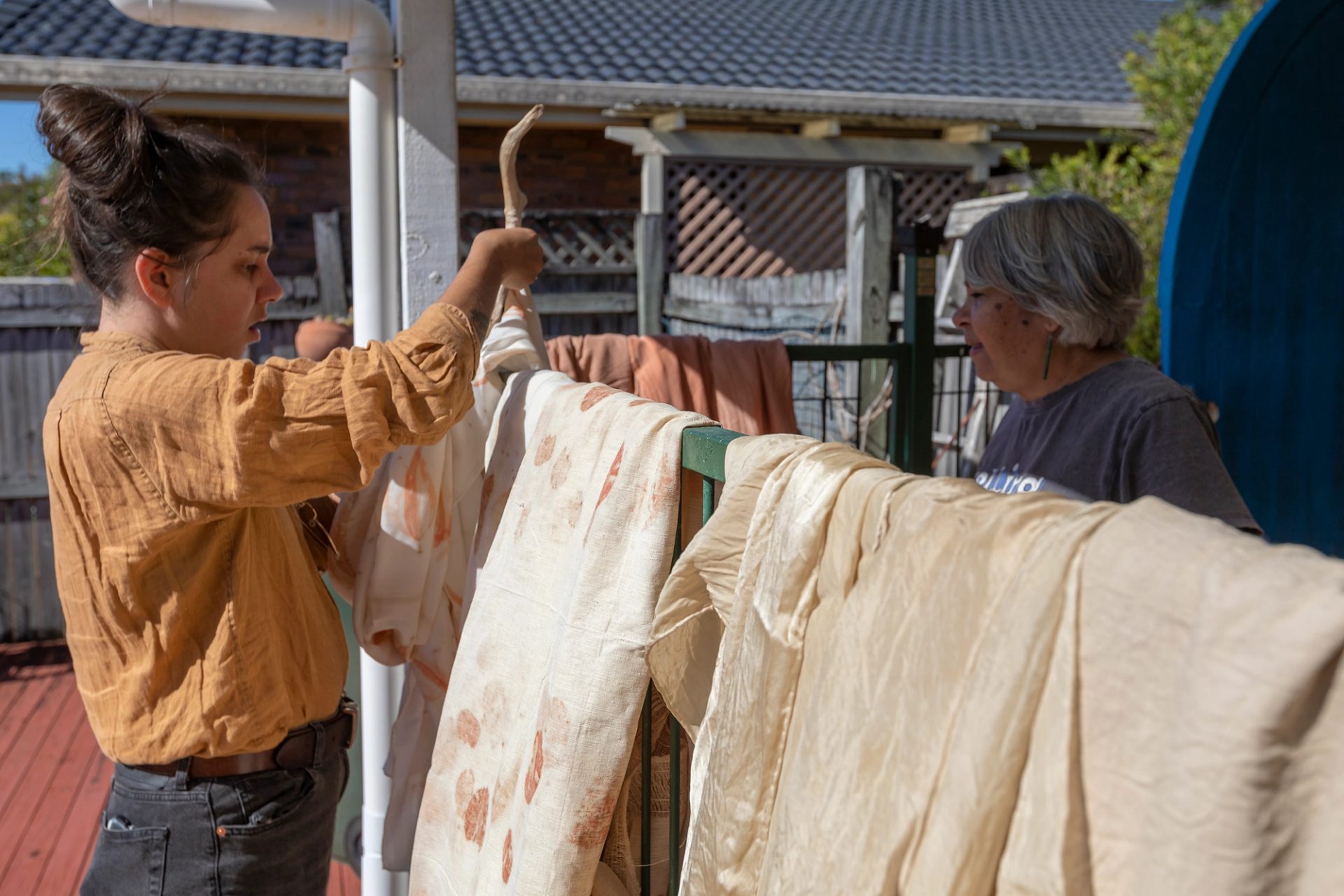
Karina Glasby, Leah Giblin and Vania Contreras made up my core team ‘in house’. Karina managed the exhibition project and me. Vania rode the many design changes and challenges. Leah sewed together the pieces of our dreams. Thankfully Karina grew up in Darwin and had a great sense of the vision and intent coming from my body in syncopated drips of logic. She set up everything for success on our end of the deal and cared for me and the project, deeply and effectively. She made most of the logistical hiccups invisible, ones that I would have lost sleep over. Vania, on the other hand, moved with the tides. She deliberately upskilled her own knowledge of the practice and the people so she could approach the project with deep understanding.
Leah, and the way she became a part of the project, should be used as an example of how to work with First Nations people if you are a coloniser. She relinquished, contractually, any intellectual and cultural power in the work she did. It was clear from the get go that she would be a skilled person for us to use, not a collaborator, not a co-maker.
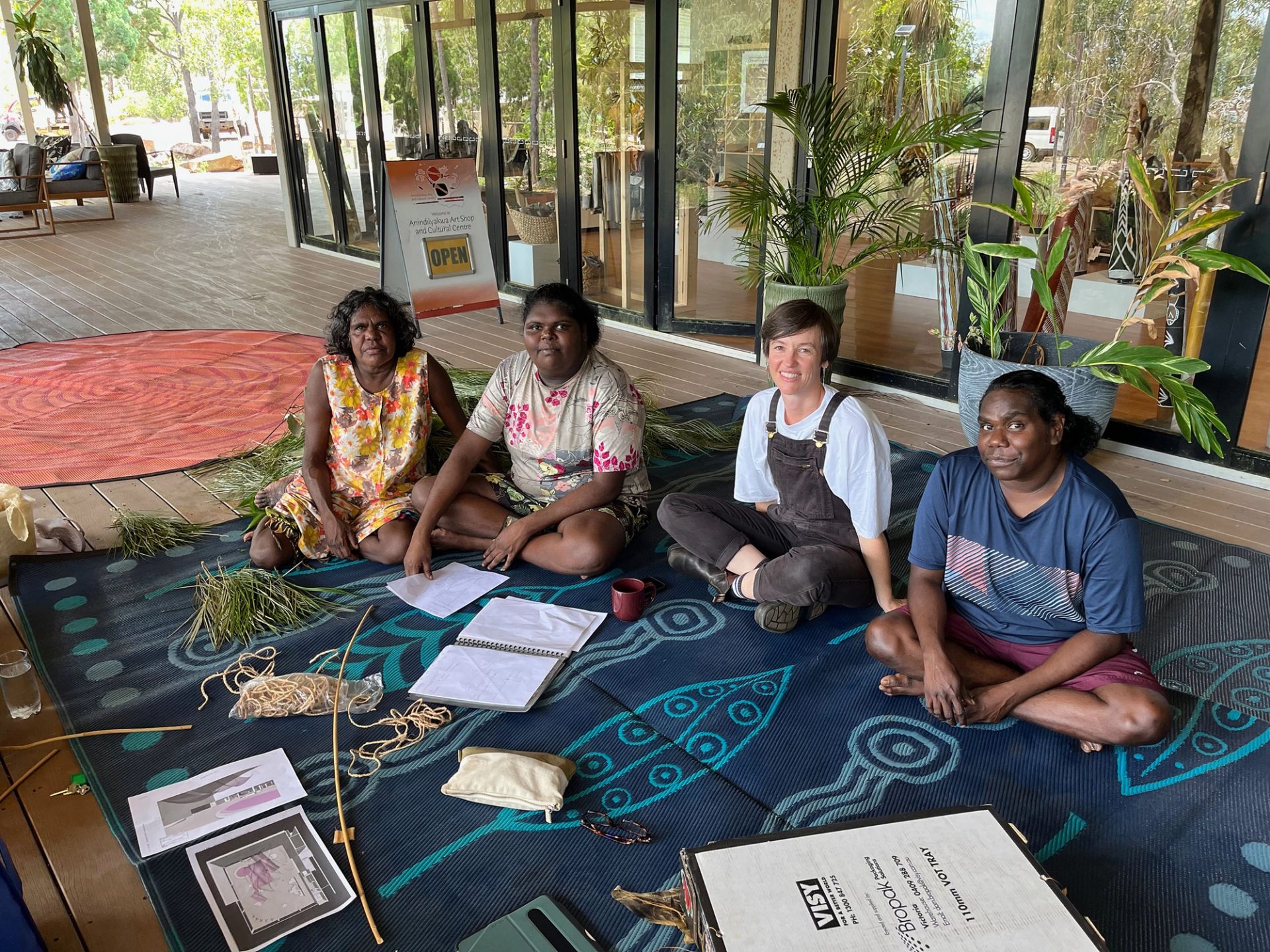
This is intentionally harsh. There are a lot of examples of non-First Nations peoples coming onto projects because they possess skills that the artists need to use to make their work. Artists don’t have all the skills but they certainly have the vision. These ‘collaborators’ then claim the intellectual and cultural applications they have learnt and apply it in their personal practices as some sort of cultural credential. This wasn’t an opportunity for Leah to gain skills to use later; the power was always in the artists’ hands, she was hired labour. A hard line between working with and claiming cultural control over the direction of an evolving work was written into the project, long before we even considered having her on board. At no point did Leah have a problem with this arrangement, in fact she helped write herself out of any connection to ownership. Leah is extremely talented with all things fabric and without her input, the visions these artists had would not have been possible. What she wanted from the project was to help make their dreams come true and what we got was a real ally who helped upskill artists in sewing, construction, and display. How refreshing! She just happens to be a beautiful person too. I know that the artists she worked with will call on her in the future. They made community, not content, together.
If your questions can’t be answered by what you see, the process can remain a seemingly magical one to you.
This is how we teach and learn. This is how we work and live together. We will show you, if you come. I hope Alchemy shows that it is not a magical process. First Nations engagement, culture, people, history and future. It is all there. You just have to immerse yourself in this Country. The water flows both ways. You just might come out magically changed. Refrain from bottling it up, writing about it for the rest of your life as a credential, collecting it, putting it behind some glass and forgetting to touch it. That’s when the magic dies. When the objects and relationships we make are no longer touchable, related to people and place, they become static. They become part of a museum. Keep it alive, don’t intellectualise it to find meaning. Just feel it and let it go. It lives in the people. It lives in the Country. Not in our collections. Collections become memories without their people attached to them.
Alchemy is presented in partnership with Agency Projects.
Large print guide March 2024.
About
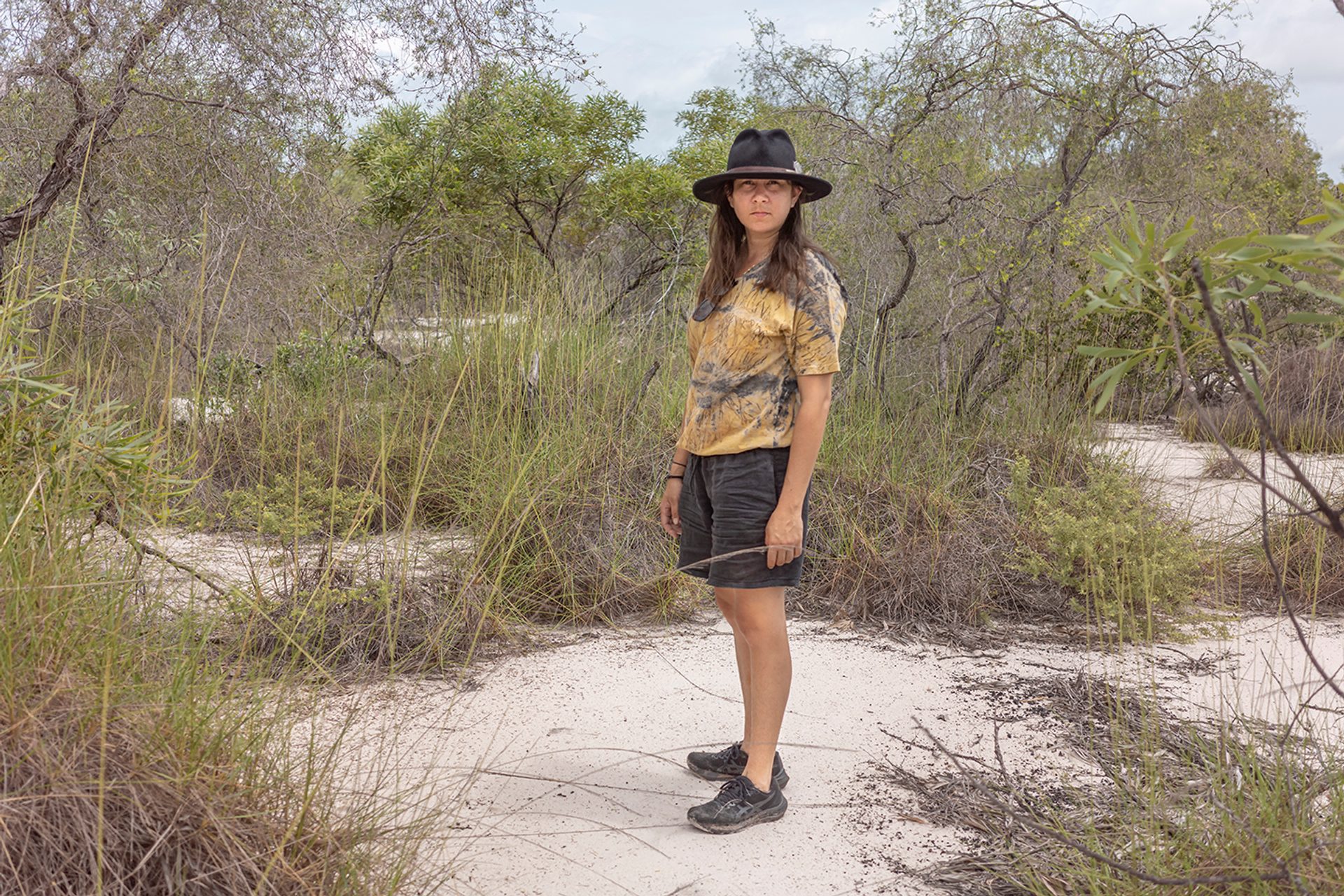
Coby Ann Edgar (she/her) is Gulumoerrgin (Larrakia), Jingili, Anglo, Filipino, queer, cis-woman from Darwin. She was a curator for Strategic Projects, First Nations at Powerhouse Museum.

















